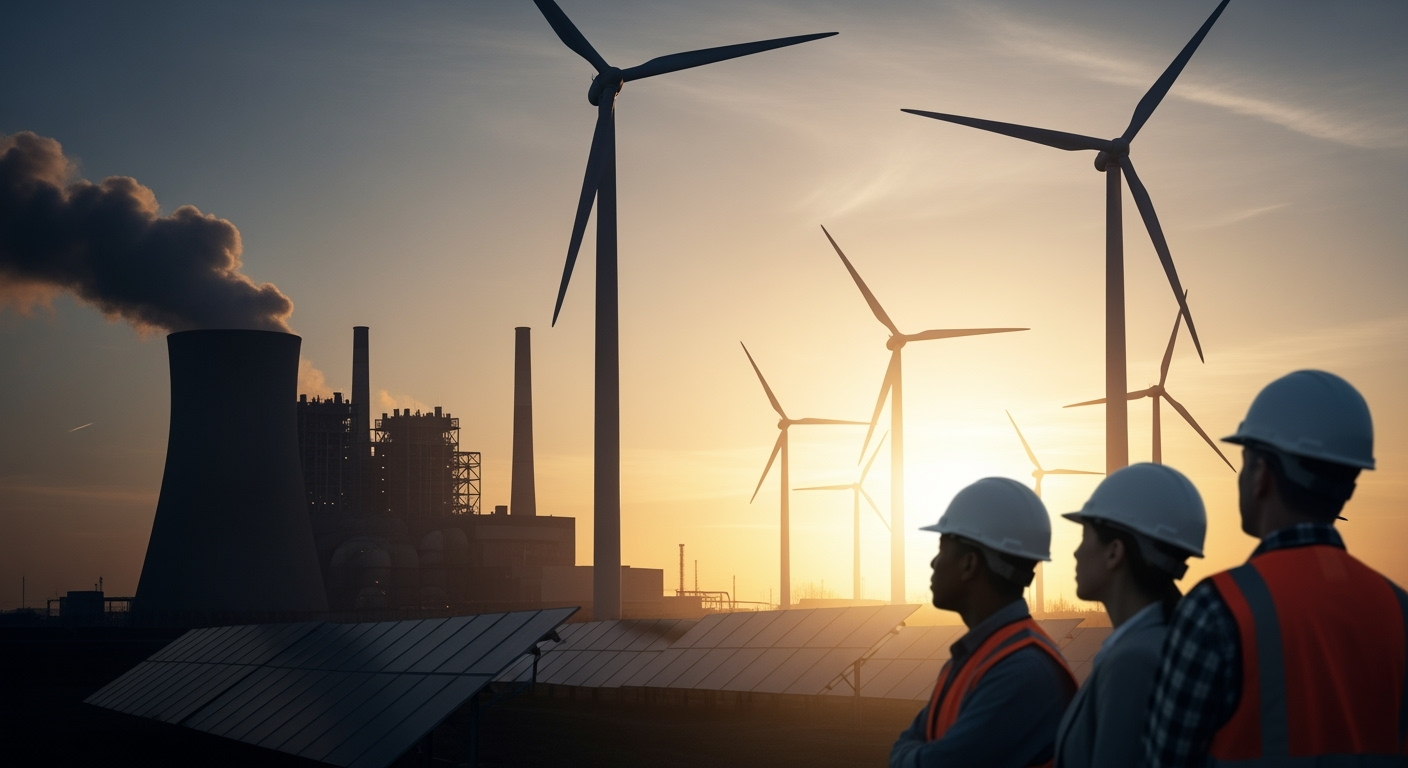Related Articles

Paris Agreement Curbs Worst Warming Scenarios, Yet Global Heating Persists

Thrifting's Transformation: From Necessity to Mainstream Movement Driving Sustainable Consumption





For the first time in recorded history, renewable energy sources generated more electricity globally than coal during the first half of 2025, marking a pivotal moment in the ongoing transition of the world's energy systems. This significant milestone, driven primarily by exponential growth in solar power and steady expansion of wind energy, underscores a profound shift away from fossil fuels, with far-reaching implications for climate, economics, and energy security worldwide. The change represents a "crucial turning point," as clean power technologies are now demonstrating their capacity not only to meet but also to exceed the planet's escalating electricity demands, leading to a marginal but notable reduction in overall power sector emissions.
Between January and June 2025, renewable sources—including wind, solar, hydropower, bioenergy, and geothermal—collectively produced an estimated 5,072 terawatt-hours (TWh) of electricity, eclipsing the 4,896 TWh generated by coal. This data, compiled and analyzed by energy think tank Ember, indicates that renewables accounted for 34.3% of the global electricity mix during this period, up from 32.7% in the first half of the previous year. Concurrently, coal's share dropped to 33.1% from 34.2%, while natural gas maintained its 23% share. The findings suggest that the rapid deployment of clean energy is beginning to fundamentally reshape the global power landscape, moving beyond incremental additions to actively displacing conventional fossil fuel generation.
This breakthrough comes as global electricity demand rose by 2.6%, an increase of 369 TWh, in the first half of 2025 compared to the same period in 2024. Solar power proved to be the primary engine of this transition, contributing a record 306 TWh of additional generation, marking a 31% year-on-year surge. This explosive growth in solar alone met an impressive 83% of the global rise in electricity demand. Wind power also saw robust growth, increasing by 7.7% and adding 97 TWh to the grid. The combined output from solar and wind not only met but surpassed the overall growth in global electricity demand, allowing renewables to actively displace fossil fuels. This displacement led to a 0.3% (27 TWh) decline in total fossil fuel generation, with coal generation falling by 0.6% and gas generation by 0.2%. Consequently, global power sector carbon dioxide emissions registered a 0.2% decrease during the first six months of 2025, preventing an estimated 236 million tons of CO2 emissions that would have occurred without the rise in clean energy.
The dramatic acceleration in renewable energy adoption can be attributed to several convergent factors, including increasingly favorable economics, technological advancements, and evolving policy frameworks in key global economies. The cost of generating electricity from solar and wind has plummeted over the past decade, making them competitive, and often cheaper, alternatives to new fossil fuel plants in many regions. Continuous innovation in panel efficiency, turbine design, and energy storage solutions has further enhanced the viability and reliability of these intermittent sources.
Policy support, including subsidies, tax incentives, and ambitious national renewable energy targets, has played a crucial role in de-risking investments and stimulating deployment. Major economies, particularly in Asia, have aggressively pursued clean energy expansion to address energy security concerns, improve air quality, and meet climate commitments. This concerted global effort has created a virtuous cycle, where increased deployment leads to further cost reductions and technological refinements.
While the global trend is clear, the pace and nature of this energy transition vary significantly across different regions. China and India emerged as the leading contributors to the renewable energy surge. China, in particular, added more renewable generation capacity than the rest of the world combined, leading to a 2% reduction in its fossil fuel use in the first half of 2025. India also demonstrated remarkable progress, with its clean power growth outpacing electricity demand three-fold, resulting in substantial declines in both coal (3.1%) and gas (34%) consumption. These Asian giants are increasingly leveraging renewables to fuel their economic growth while simultaneously curbing emissions.
In contrast, other regions experienced a less straightforward transition. Fossil fuel generation saw an increase in both the United States and the European Union during the same period. In the U.S., demand growth outstripped the pace of renewable energy expansion, leading to a 17% increase in coal generation. Similarly, the EU saw higher gas and coal generation, attributed partly to weaker performance from wind and hydropower assets. These regional disparities highlight the complex interplay of demand growth, existing infrastructure, weather patterns, and policy choices that influence the energy mix. The need for greater investment in grid infrastructure, energy storage, and flexible generation sources remains a critical challenge, particularly in developed economies striving to integrate higher shares of variable renewable energy.
The attainment of this milestone serves as powerful evidence of the world's capacity to transition to a cleaner energy future. However, the path forward is not without obstacles. While renewables are now the leading source of electricity, the International Energy Agency (IEA) has adjusted its forecast for global renewable energy growth from 2025 to 2030, lowering it by 5% compared to previous projections. This revision, attributed to "policy, regulatory and market changes" primarily in the United States and China, suggests that the world may fall short of the COP28 target to triple renewable energy capacity by 2030. The IEA now anticipates a 4,600 gigawatt (GW) increase in renewable capacity by 2030, which is 2.6 times the 2022 level, down from an earlier projection of 5,500 GW.
Despite these adjustments, the long-term outlook for renewables remains robust. The IEA projects that global renewable capacity will more than double by the end of the decade, with solar photovoltaics expected to account for 80% of this new clean energy capacity. China is expected to remain the dominant driver of this expansion, with India emerging as the second-largest growth market. Other nations, including Saudi Arabia, Pakistan, and several Southeast Asian countries, are also poised for significant solar adoption.
This historic shift underscores that the trajectory towards a decarbonized power sector is gaining undeniable momentum. It signals that clean energy technologies are no longer niche solutions but central pillars of the global electricity supply, capable of meeting and exceeding growing demand while simultaneously mitigating climate impact. The challenge now lies in accelerating this transition globally, addressing regional hurdles, and ensuring that policy frameworks, infrastructure development, and technological innovation continue to support and amplify this crucial turning point for the planet's energy future.